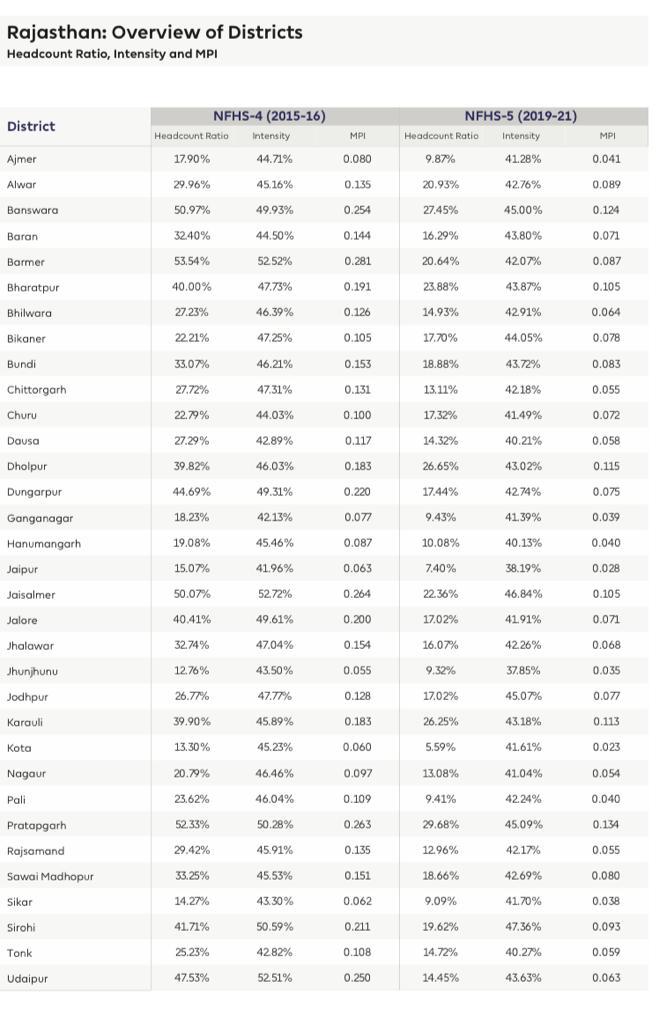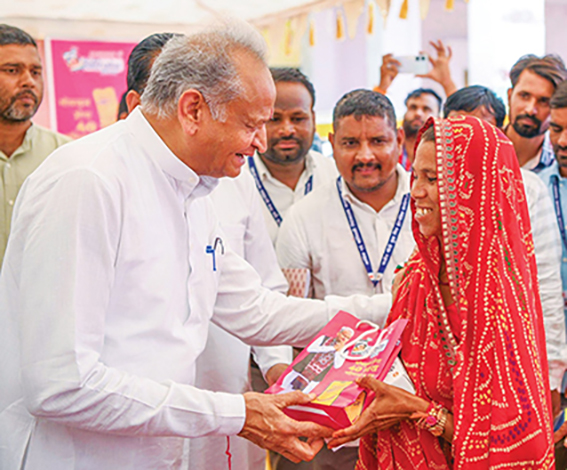
As many as 1.1 crore people in Rajasthan moved out of multidimensional poverty between 2015-16 and 2019-21 as per NITI Aayog's Report – National Multidimensional Poverty Index: A Progress Review 2023.
The number of persons living in multidimensional poverty fell from 28.86% to 15.31% of the Rajasthan's population during the period, the report estimated. Rural poverty witnessed the fastest decline from 34.53% to 18.62%, while it declined from 11.21% to 4.54% in urban areas.
The report says that 13.5 crore people have moved out of multidimensional poverty during this period with maximum population of 3.43 crore from Uttar Pradesh – the most populous state in the country.
Based on the latest National Family Heath Survey [NFHS-5 (2019-21)], this second edition of the National Multidimensional Poverty Index (MPI) represents India's progress in reducing multidimensional poverty between the two surveys, NFHS-4 (2015-16) and NFHS-5 (2019-21). It builds on the Baseline Report of India's National MPI launched in November 2021. The broad methodology followed is in consonance with the global methodology.

Best performing districts
According to the report, Pratapgarh (29.68%) has the highest number of population living under multidimensional poverty followed by Banswara (27.45%) and Dhaulpur (26.65%). However, the best performing districts, which have improved drastically in last five years in terms of reducing poverty are Udaipur, reducing poverty from 47.53% in 2015-16 to 14.45% of the population followed by Barmer, from 53.54% to 20.64% and Jaisalmer from 50.07% to 22.36% of the population. In Jaipur, the population under multidimensional poverty has almost reduced to half in 5 years' time from 15.07% to 7.40%.
Reasons for poverty reduction
The remarkable progress can be attributed to extremely low deprivation rates especially for electricity, access to bank accounts and drinking water. All 12 parameters of the MPI have shown marked improvements. Flagship programmes like the Poshan Abhiyan and Anaemia Mukt Bharat have contributed to reduced deprivations in health. Initiatives such as Swachh Bharat Mission (SBM) and Jal Jeevan Mission (JJM) have improved sanitation across the country.
The central government schemes have been complemented well with Ashok Gehlot's welfare schemes. Gehlot government's free medicine, free electricity in agriculture and Chiranjeevi health scheme have contributed a lot in improving the living conditions of poor people in the state. Schemes like Indira Rasoi for food at subsidised rates has ensured no one sleep hungry while old age pension schemes have brought self-dependence among rural population.



The BuckStopper, run by a group of seasoned journalists, holds the powerful accountable. The buck stops with them, as they cannot shrug off their official responsibilities.



